NOAA satellites capture activity on the Sun while NOAA forecasters issue alerts, watches and warnings and track solar events
In case you missed it, Solar Cycle 25 has ramped up much faster than scientists predicted producing more sunspots and eruptions than experts had forecast. Tracking and predicting the Sun’s solar cycles gives a rough idea of the frequency of space weather storms of all types – from radio blackouts to geomagnetic storms and solar radiation storms – and it’s used by many industries to gauge the potential impact of space weather on Earth. Though we are seeing increased activity on the Sun, we expect this solar cycle to be average compared to solar cycles in the past century.
Solar Cycle 25 began in December 2019 with a marked increase in solar activity. Here is a timeline of some of the more interesting solar events we observed this cycle so far:
December 24, 2019
Two sunspot pairs appeared on Christmas Eve, one in the Sun's southern hemisphere and one in the northern hemisphere. The magnetic orientation of these spots reveal that they are opposite to the magnetic orientation in Solar Cycle 24, meaning, Solar Cycle 25 has begun. In 2019, 274 days went by without sunspots, the highest number of spotless days since 1913.
Thanksgiving 2020 (Nov. 23 to Dec. 6)
The largest group of sunspots yet in Solar Cycle 25 appeared in the southern hemisphere and made its way across the Sun over a two-week period. It had 17 sunspots at its peak and covered an area six times the surface of the Earth.
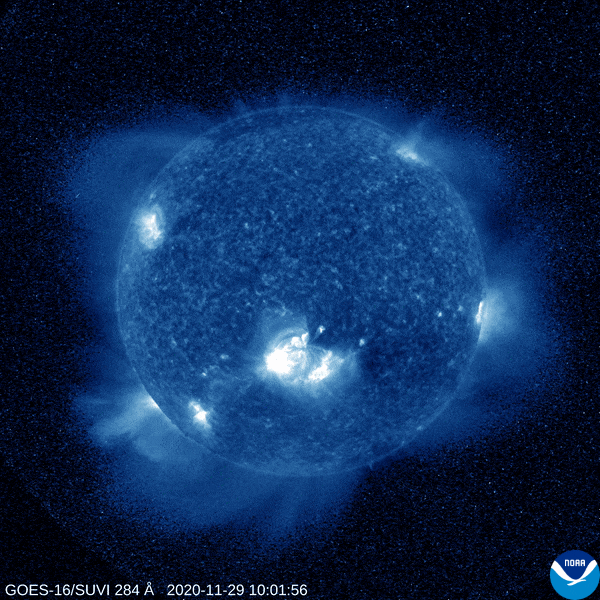
May 12, 2021
The Space Weather Prediction Center observed the first strong geomagnetic storm (G3, level 3 out of 5 on NOAA’s Geomagnetic Storm Scale) of Solar Cycle 25, caused by a Coronal Mass Ejection (CME) that erupted on May 9.
July 3, 2021
The first X- class flare of Solar Cycle 25 provided some solar fireworks just before Independence Day. The Space Weather Prediction Center observed a strong (level 3) radio blackout. The same active region also produced two weaker (M class) flares and two CMEs.
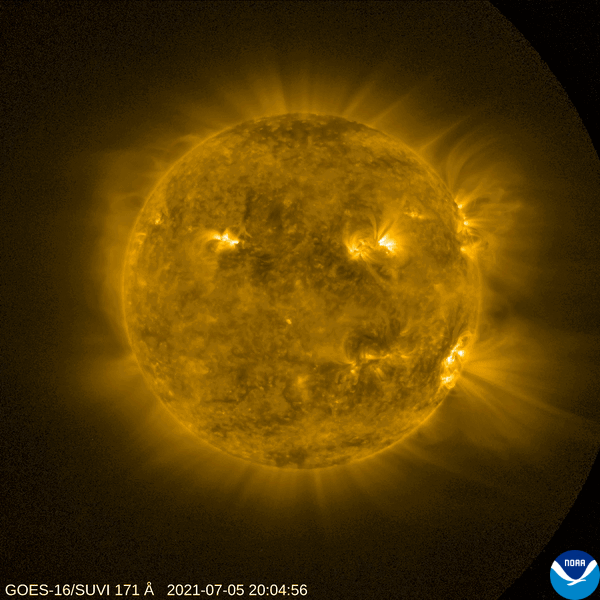
Halloween 2021
Happy Halloween. The excitement started with another X-class flare on October 28, which caused a strong (level 3) radio blackout. It was followed by several proton events from October 28 to 30. These were the largest radiation storms yet in the young cycle, but still only a relatively minor space weather hazard.
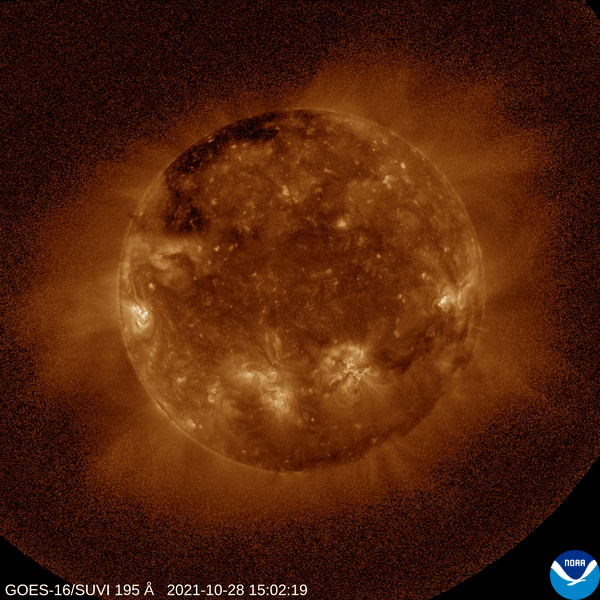

November 4, 2021
A series of CMEs caused the first severe geomagnetic storm - G4 - in Solar Cycle 25. Following activity on Halloween, as the Sun was rotating out of view this same sunspot region launched at least one CME. Another CME soon followed (possibly from the same region) and then another. The third, faster CME caught up to the other two, merging with them in what is called a "cannibal CME". The combined gusts of plasma swept over the Earth on November 3 and 4. Aurora borealis, or northern lights, were seen as far south as California.
January 29, 2022
Starting on January 29, a series of CMEs erupted on the Sun. They were not particularly large or energetic, but when they reached the Earth on February 3 and 4, they ushered in several days of minor geomagnetic disruption. These disruptions caused Earth's outer atmosphere to heat up and expand. During this event, Starlink, a private space company, launched 49 satellites, destined for low-Earth orbit. As these satellites were rising through the expanded atmosphere, they encountered more drag than expected, causing 38 of the 49 satellites to burn up.
April 20, 2022
The Sun emitted the largest solar flare yet in Solar Cycle 25 (as of March 2023). The X2 flare emitted its own burst of radio waves, as well as disrupting radio wave propagation through the ionosphere causing a level 3 radio blackout. This region also produced multiple weaker (M class and C class) flares.
January 2023
The sunspot number spiked in January. Activity was particularly high near the end of February, with an X class flare on February 25 (the second largest of the cycle so far), a CME-induced magnetic storm on Feb 27, and more than 20 radio blackouts between Feb 20 and March 5, ranging in severity from minor to strong (level 1-3).
March 13, 2023
The Sun unleashed what is estimated to be the fastest and most energetic CME yet in Solar Cycle 25. Moving at a remarkable speed of more than 2000 kilometers per second, this CME could have covered the 150 million kilometers between the Sun and the Earth in less than 20 hours. Fortunately, the CME was not directed at Earth; it went off in the opposite direction - walloping Jupiter around the Ides of March. The event was so big and energetic that particles did eventually reach Earth, causing a minor (level 1) radiation storm.
March 23, 2023
We observed our second severe geomagnetic storm (G4) in Solar Cycle 25, the largest such event in nearly six years. Electrical power disruptions were reported in several states and aurora was visible in more than half of the U.S., reaching as far south as New Mexico, Missouri and North Carolina.
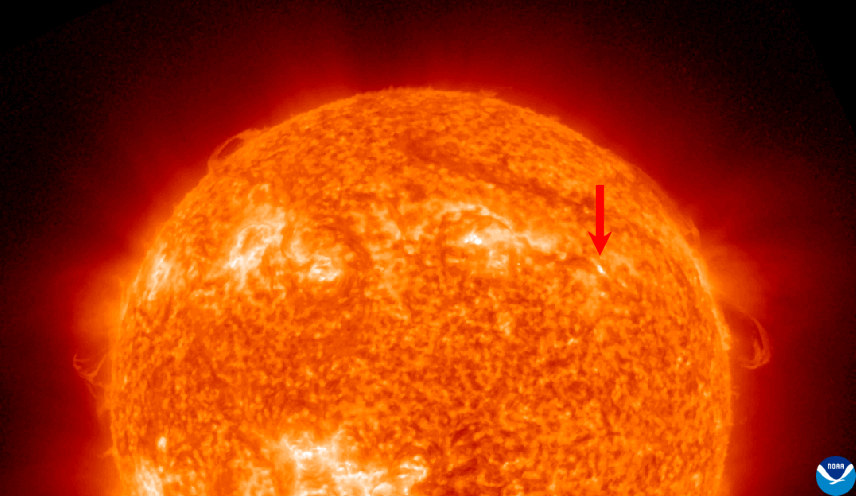
April 21, 2023
We observed our third severe geomagnetic storm (G4) this cycle. A CME erupted from the Sun on April 21. Plasma from the eruption traveled at nearly 800 kilometers per second toward Earth. Aurora was observed in areas as far south as California.
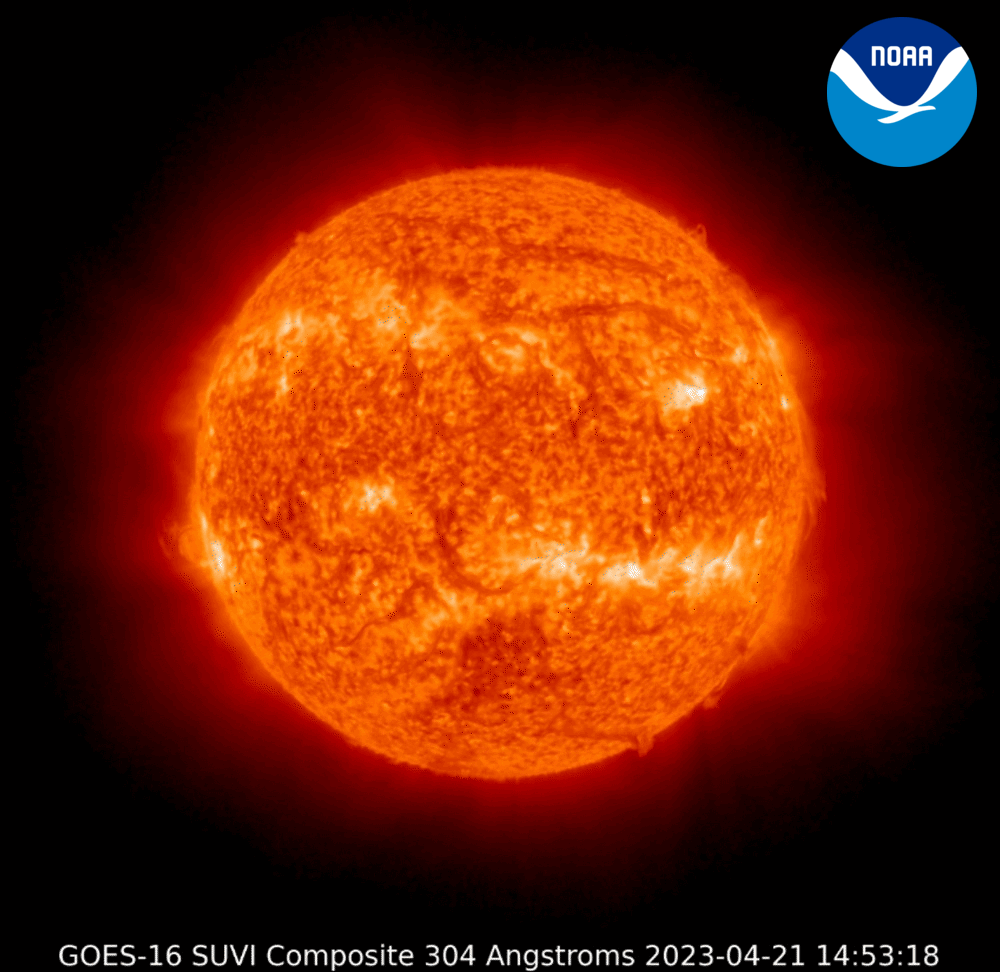
Timeline compiled by Mark Miesch, Ph.D., a CIRES scientist working at NOAA's Space Weather Prediction Center.
“The timeless progression of the solar cycle marches on. Although the Sun is no more active than in previous generations, our society has changed. With our increasing reliance on electric power, global telecommunications, satellite navigation and aviation, we are more sensitive than ever to the Sun's changing moods,” said Miesch. “Stay tuned for more fireworks as we approach yet another solar maximum in 2024.”
NOAA's Space Weather Prediction Center is the official source for space weather forecasts, watches, warnings, alerts and impacts. Visit www.spaceweather.gov for updates.
NOAA’s National Environmental Satellite, Data, and Information Service operates and manages the United States environmental satellite programs. Visit https://www.nesdis.noaa.gov/current-satellite-missions/currently-flying for more information.